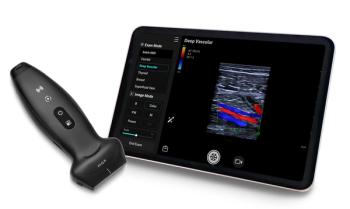
Are you underpaid? A physician’s step-by-step guide to find out

Key Takeaways
- Physicians should evaluate total compensation, including pay stubs, bonuses, and benefits, to establish a baseline for comparison.
- National benchmarks and regional data are crucial for accurate compensation comparisons, considering specialty, setting, and location.
A 10-step guide for physicians to assess their compensation accurately, using benchmarks and data to ensure they receive fair pay for their expertise.
The unease creeps in during a late-night chart review, or when a colleague mentions a signing bonus. It’s that whisper of doubt: am I really being
For physicians who work long hours to care for patients, wondering whether the paycheck matches what they are putting in matters. If you’ve caught yourself tallying call hours, comparing parking-lot conversations or second-guessing the value of your work, you’re not alone.
This guide turns that gut feeling into a clear, step-by-step process so you can replace uncertainty with answers. Using concrete benchmarks, productivity data and cost-of-living math can help turn a vague suspicion into a clear, evidence-based case for fair pay, so you don’t leave money on the table. That data can arm you, when necessary, with the confidence to ask for more.
"Negotiations shouldn’t be taboo," wrote Maureen Cragon, CMSR, in a recent
Here’s a data-driven way to find out whether you’re earning less than the market.
1. Add up every dollar you actually take home
Pull the last 12 months of pay stubs, call stipends, quality bonuses, retirement matches, CME funds and loan-repayment or signing bonuses. The sum, plus the dollar value of employer-paid benefits, is your total compensation baseline. Use your W-2 (box 1) and benefits statements to capture the full picture.
2. Grab at least two national benchmarks
Free surveys give a quick reality check: the
3. Match apples to apples (specialty, setting, region)
Pay can swing $100,000 or more between metro areas. Filter survey data to your state or metro area and to employed versus private practice before comparing. Use interactive salary maps (Doximity has them) or MGMA regional cuts to gather this info.
4. Check the productivity math
Most employed contracts pay a base plus a work-RVU incentive. AMGA found median primary-care productivity rose 4.6 percent last year while compensation per wRVU barely moved. A good place to start is to pull an EHR productivity report, divide total pay by wRVUs and see how your ratio stacks up against MGMA or AMGA percentiles.
5. Factor in the invisible dollars: benefits and workload
Health premiums, malpractice coverage, 401(k) matches and extra PTO have cash value. So does uncompensated admin time or a heavy call schedule. One experiment to run is to convert each benefit (or burden) to a dollar figure and add or subtract from Step 1.
6. Adjust for cost of living
A $400,000 salary in rural Ohio buys more than $500,000 on the California coast. The Bureau of Economic Analysis pegs California’s price level at 112.6 versus 86.5 in Arkansas. These are just a couple examples on how cost of living can really impact the real value of a physician’s compensation. A good step is to run your state’s Regional Price Parity through an online COLA calculator and recast your pay in “real” dollars.
7. Compare your raises to national trends
Medscape reports nearly half of doctors saw pay stay flat, and another 28 percent got bumps of 10 percent or less. Plot your own year-over-year pay and productivity; if raises lag while wRVUs climb, that’s a red flag. A good idea is to keep a three-year spreadsheet of salary and productivity.
8. Reality-check with recruiters and peers
Recruiters track real-time offers. AMN Healthcare’s 2024 review shows average physician signing bonuses topping $31,000. Peers on specialty listservs or alumni forums or even Reddit forums can confirm whether your offer looks skinny — though do beware that some of this data will be anonymous and should be double checked when you can. Maybe a better step is to call two recruiters and poll at least three peers in similar roles and see what they are willing to share.
9. Scrutinize your contract
Look for CPI escalators, fair-market-value clauses, compensation floors and paid tail coverage. Missing or outdated language can lock you below market. It’s a good idea to have a health-care attorney or contract-review service flag negotiable items.
10. Decide, and act
Landing below the 25th percentile (after COLA and productivity adjustments) signals underpayment. Compile a one-page evidence sheet (benchmarks, wRVU ratios, benefit comparisons) and request a formal review. Smaller gaps (under 10 percent) might be closed with better call pay, extra PTO or tuition perks. The best path forward is to present specific data-based proposals to leadership.
If talks stall, update your CV and test the market.
Newsletter
Stay informed and empowered with Medical Economics enewsletter, delivering expert insights, financial strategies, practice management tips and technology trends — tailored for today’s physicians.


















